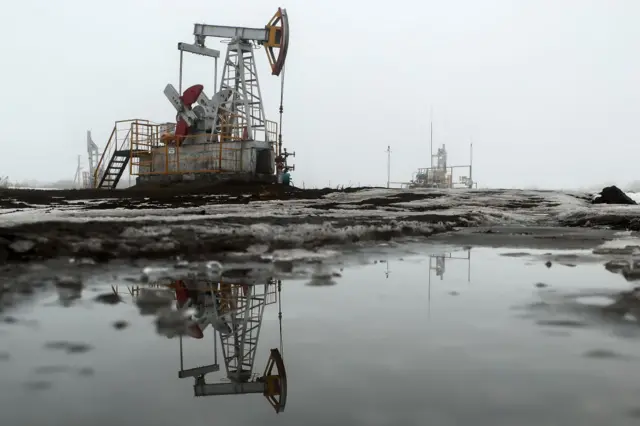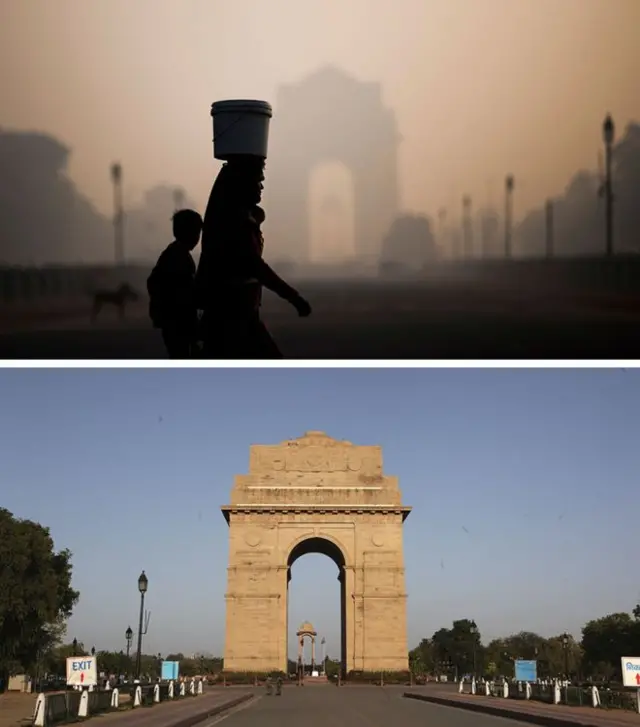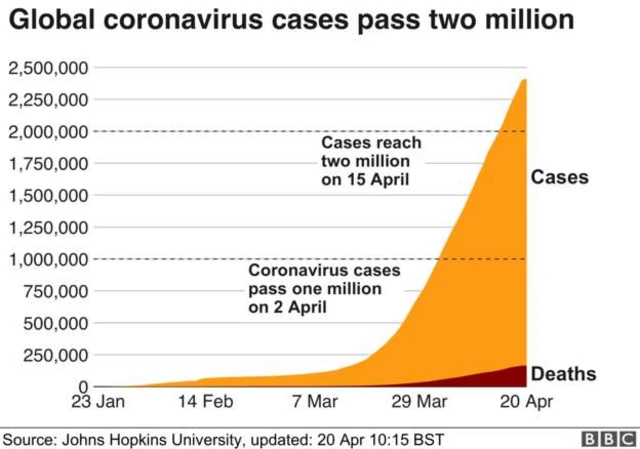Why did US oil prices turn negative?published at 05:10 BST 21 April 2020
Justin Harper
Business reporter
 Image source, Getty Images
Image source, Getty ImagesHere are the answers to some questions you might have about the crash in US oil prices.
Why is this happening?
As economic growth slumps, so too has the demand for oil. Factories and manufacturing plants have been closed and they consume a lot of oil. Transport has also been hit hard with planes grounded and less car usage.
So if there's an over supply, why not just stop producing oil?
Sadly it's not as simple as turning on and off a tap. It takes time to pump the oil and stop production. Plus it's very costly to restart operations.
The other issue is oil companies don't want to stop as this is their only source of revenue, and they don't want to lose market share.
So it's a supply and demand issue?
Not exactly. The price crash on Monday was also driven by oil trading. Oil is traded in contracts based on its future price. Contracts for oil for May were approaching their expiry date so traders were rushing to sell them.
What does it mean for the industry?
Oil companies are being battered by these unprecedented price falls and there are fears hundreds of oil firms in the US could go out of business.
Why was this just US oil?
Oil prices have two general prices - US oil is priced using West Texas Intermediate (WTI) as a benchmark. The rest of the world uses Brent as its benchmark. The futures contracts coming up for expiry were WTI based. Lack of storage is also one issue specifically facing the US.










